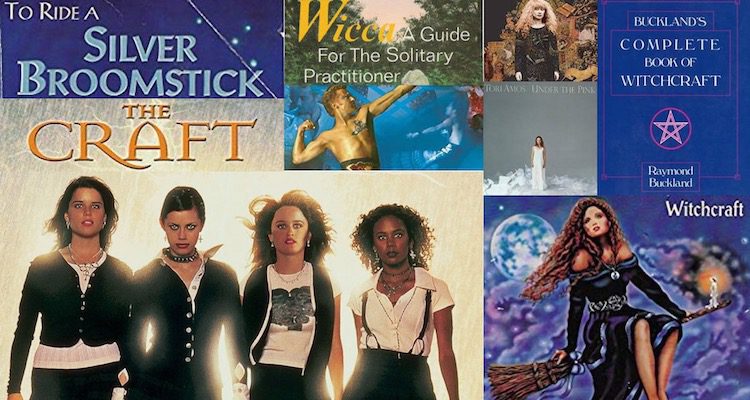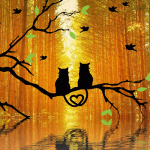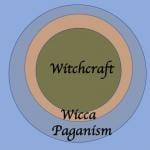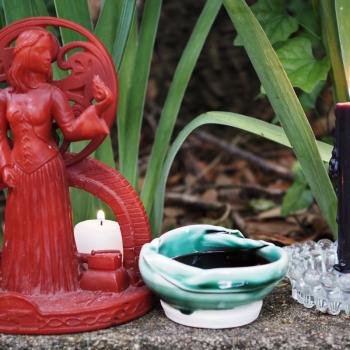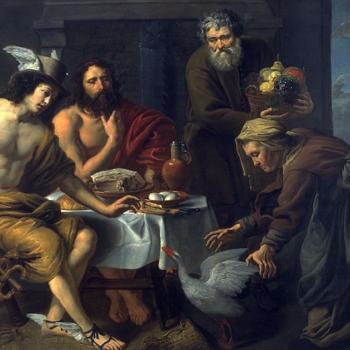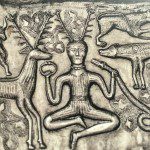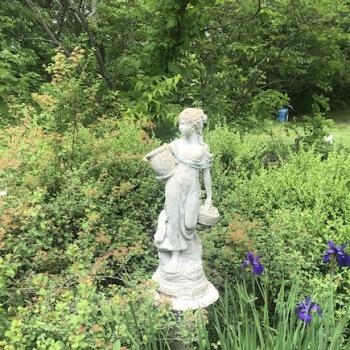About every twenty or so years there’s what I think of as a Pagan/Witch bubble. For whatever reason, Witches supplant zombies or vampires in the public imagination and all of a sudden there’s an abundance of Witch related material on TV (or whatever device you stream on), on the stereo, and at the movies. Prior to the current boom the last one occurred in the mid 90’s (let’s say 1994) and lasted until about the end of the decade. The current bubble began about 2014 and continues full speed ahead.
I grew up as a Witchling in that last bubble, embracing Paganism in 1994. I was 21, and about as Generation X as a Gen X’er can get. I grew up loving hair metal, and then later fell in love with Pearl Jam, Nirvana, and (especially) Tori Amos. I watched Beverly Hills 90210 and Melrose Place, and Batman: The Animated Series remains the best cartoon of all time.
The 90’s were a strange time for Paganism. Print magazines were still relatively robust, and a lot of us sent letters to one another as a means of introduction. (I met my first fellow Pagan through the exchange of letters.) By the end of the 90’s most of us had embraced email and the list-serve that went along with them (beginning a new era of “Witch Wars” that’s only escalated in the age of social media). Books were still a REALLY big deal, and for most of us, a gateway into the magickal community. Whether or not one was an initiated Witch was still a thing back in the 90’s, and I was “lucky” enough to meet a few people in my formative years who wouldn’t talk to me because I was an “eclectic.”
What follows are some thoughts on the people, music, books, and movies that helped define my experiences as a Pagan-Witch growing up in the 90’s as a member of Generation X. I expect some will disagree with my thoughts, and I know a whole lot of Millennials who claim many of these books and films as their own (as is their right). For those of you I grew up alongside, I hope you enjoy this trip down memory lane, and thanks to Mat Auryn for the inspiration (and please don’t ever refer to Tom Petty as “Dad Rock” ever again, that still haunts me).
The Craft
Do you have strong feelings about 1996’s The Craft? For many of us in Gen X (and thanks to cable and re-runs, Millennials too) it’s either a Witchcraft masterpiece or an exploitative hit-piece on Witchcraft. My opinions on the movie were always somewhere between those two extremes. I thought much of the magick it depicted felt grounded in reality. Binding spells are real enough, and I don’t think anyone was shooting Witchcraft laser-beams out of their eyes during it. I remember leaving the theatre and remarking to the girlfriend I saw it with that much of the magick in the movie seemed “doable.”
The thing that most resonates about The Craft for me are the fleeting moments when the film captures ritual as I had always imagined it. I wanted to be on that beach calling the quarters and casting a circle as the sun began to set. (Even now, living just 30 minutes from the ocean this is still something I have yet to do.) I wanted to be in a coven where I could be the Earth, to my coven-mates Air, Fire, and Water.
The Craft also dredges up negative emotions for many people too, including me. The magick in the movie was always far too adversarial and aggressive for my tastes, and I would never use my Witchcraft to look down upon others. I wanted the movie to portray Wiccan-Witchcraft in an accurate way since it seemed to use that practice as a baseline (and get it right at least for a minute or two sometimes). As the Witchling I was, I wanted a film that cried out to the Great Goddess and not Manon (whoever that was).
Did The Craft lead a lot of people to Witchcraft? Absolutely, and many of them ended up sticking around longterm. As a part of a college student group back in those days we got our fair share of folks influenced by the film, and I’m sure that because our Witchcraft did not look like that of Nancy, Rochelle, Sarah, and Bonnie a few people were disappointed. But most people weren’t expecting that anyways, and were perfectly happy to experience the Craft as we practiced it.
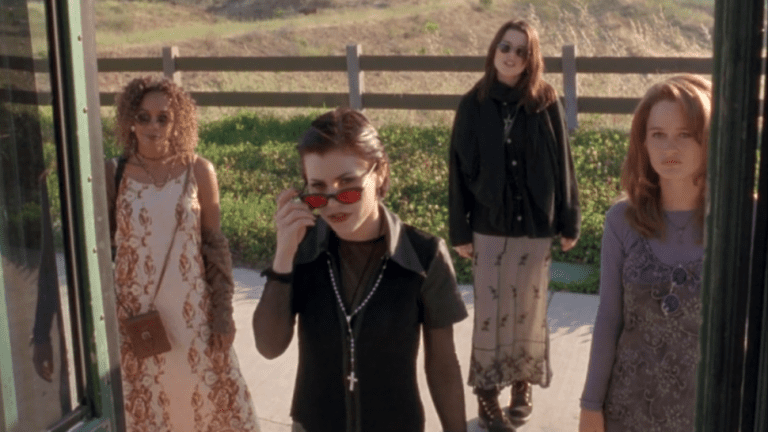
Tori Amos, Lord of the Dance, Loreena McKennitt, and Rusted Root
Today there’s more Pagan music out there than you can shake a stick at, but back in the days before Pro-Tools, YouTube, and libraries of music on cellphones, finding Pagan music was difficult. Sure, there were Witch stores around, and some of them sold Pagan CD’s, but those CD’s were often expensive, and it was often difficult to hear the music on those CD’s before buying them. As a result what a lot of us thought of as “Pagan Music” varied wildly.
I had a girlfriend call me back in 1997 (on my landline no less) imploring me to turn on PBS. I think they were showing excerpts from dance Michael Flatley’s Lord of the Dance, and because it was “Celtic” we both believed that we were watching something “Pagan.” Is Lord of the Dance Pagan? Of course not, and it’s barely Celtic, but it resonated, and perhaps more importantly it made us feel Pagan, and a lot of other “Celtic” music did too.
There were other, more mainstream artists that made us feel Pagan too. Tori Amos instantly comes to mind, and there remains something Witch-like about Tori all these decades later (even if it was never that explicit in the lyrics). Generation X was also home to a revival of hippy and jam-bands, and due to that “love of the earth” aesthetic, groups like Rusted Root felt like the right accompaniment for ritual. (They had a lot of drums in their music, and isn’t Witchcraft just one big drum circle? It’s not, but my early years as a Witch were confusing.)
Nothing was more Pagan to me in the 90’s than Loreena McKennitt, and it still remains my “go to” when it comes to background music at Samhain. McKennitt has always been clear that she’s not a practicing Witch or Pagan, but the gorgeous voice, hypnotic instrumentation, and lyrical content have often suggested otherwise. Even McKennitt albums and songs without Pagan themes have become “go to” tracks when I listen to “Pagan Music.”
Silver Ravenwolf
In my mind there’s no writer more associated with the Witchcraft of Generation X than Silver Ravenwolf. Released in 1993, Silver’s To Ride a Silver Broomstick was the perfect book released for those of us caught up in the Witch Bubble fo the 90’s. Silver’s Witchcraft was accessible, easily understood, and didn’t allow for “lack of a coven or initiation” to become a stumbling block. It’s not an exaggeration to say that I read Broomstick at least two dozen times from 1994 to 1996.
When I contrast Silver and Broomstick with the other authors and books I was reading at the time, it’s obvious to me why I adored it so much. Buckland? Far too clinical. Cunningham?* Not exciting enough. Adler? Drawing Down the Moon was written for and about Baby Boomers. Starhawk? I wasn’t smart enough to understand it back then. Ravenwolf made Witchcraft and magick exciting, and she didn’t speak down to us newbies.
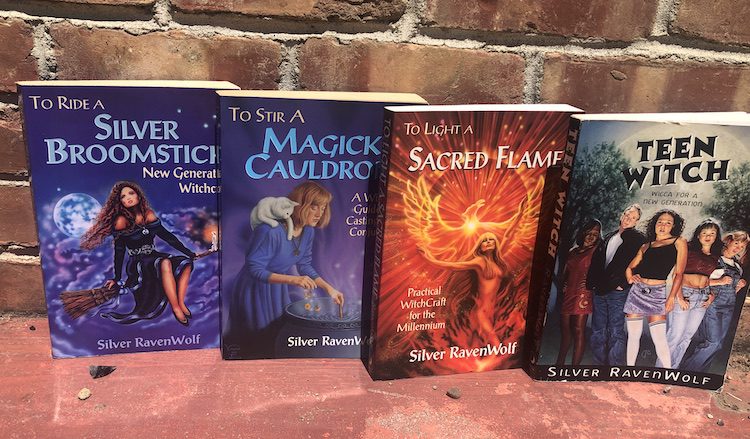
In typical sarcastic Gen X style, there was a big backlash against Silver Ravenwolf after the publication of Teen Witch (1998). As twenty-something Witches a lot of us sneered at “marketing Witchcraft to teenagers,” and it became fashionable to bash Ravenwolf in many circles (a trend that has continued uninterrupted by many into the present day). I’m also willing to wonder if some of the backlash against Silver was due to jealousy? Why was our Gen X author now writing for Millennials?
Love or her hate her, Ravenwolf had a tremendous impact on Generation X (and yeah yeah Millennials too). When my wife and I merged our book collections, Broomstick was one of those books we suddenly had two copies of. Even today I still comb through its pages, not just because of its historical impact, but because I find it still speaks to me.
On Llewellyn, Books, and Publishers
The 90’s were the best and worst of times for Witchcraft and Pagan books. On the plus side, for the first time ever, there were dozens and dozens of Pagan and Witch titles written by actual practitioners. One could find books full of ritual and practice, prior to that books with Witchcraft ritual weren’t exactly rare (they had been in print since the 1970’s), but the pickings were a bit slim. In the 90’s the floodgates opened and they have yet to be turned off.
This is not meant to imply that all the books published in the 90’s were good. Some of the absolute worst Witch-related books of all time were published in the 1990’s. Many of those books have become the butt of jokes today, and for good reason, though I think many of them were written with the best of intentions. (But not all of them, anyone remember The 21 Lessons of Merlin?)
Just what book you might suggest to a beginner is often a generational thing. Even today I know a lot of Baby Boomers who recommend Adler, Huson**, and Starhawk, while my generation tends to go with Buckland, Cunningham, and Ravenwolf. None of those choices are bad either, it’s just the difference between Black Sabbath and Iron Maiden.
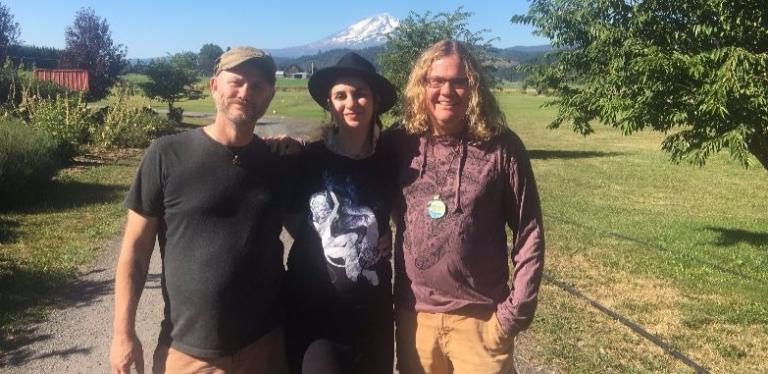
We Made a Mark
Though it’s become routine today to overlook the contributions of Generation X to just about everything, we made a mark in the Pagan world. We built many of the first webpages and blogs dedicated to Witchcraft and Paganism (biggies too like The Wild Hunt), and our search for community led us to publish ‘zines and begin Pagan groups and events. We loved our practices and beliefs, and weren’t scared to be out of the closet.
When I became a part of student group at Michigan State University in 1996 I was surprised by just how many people in it were over the age of 30. It quickly became something more than just a group for college-age students. It became a community gathering point because there was nothing else around. We weren’t afraid to do the work and we weren’t afraid to be public about it. Many of the people I met at Pagan gatherings were in similar positions and of a like age. None of us were concerned about initiations or how people identified. We simply wanted to do stuff.
Today there are a whole host of Generation X writers, bloggers, and doers in the Pagan Community. Many of us still feel like “the new kids on the block” even though we’ve been doing this for over thirty years in some cases. (For all those Millennials who still feel as if they aren’t allowed to sit at the adult table on Thanksgiving, we feel you! That’s been our experience too! Don’t worry you can sit by me anytime!) I’m proud to be a part of Generation X, proud of the influences that shaped us, and proud of the impact we’ve had on the Pagan world.
*There are two authors most associated with Generation X, the other obviously being Scott Cunningham. There’s probably a divide among Gen X between “Cunningham Witches” and “Ravenwolf Witches.”
**I’ll add here that Huson’s Mastering Witchcraft has found a strong second-life as a foundational text in Traditional Witchcraft.


